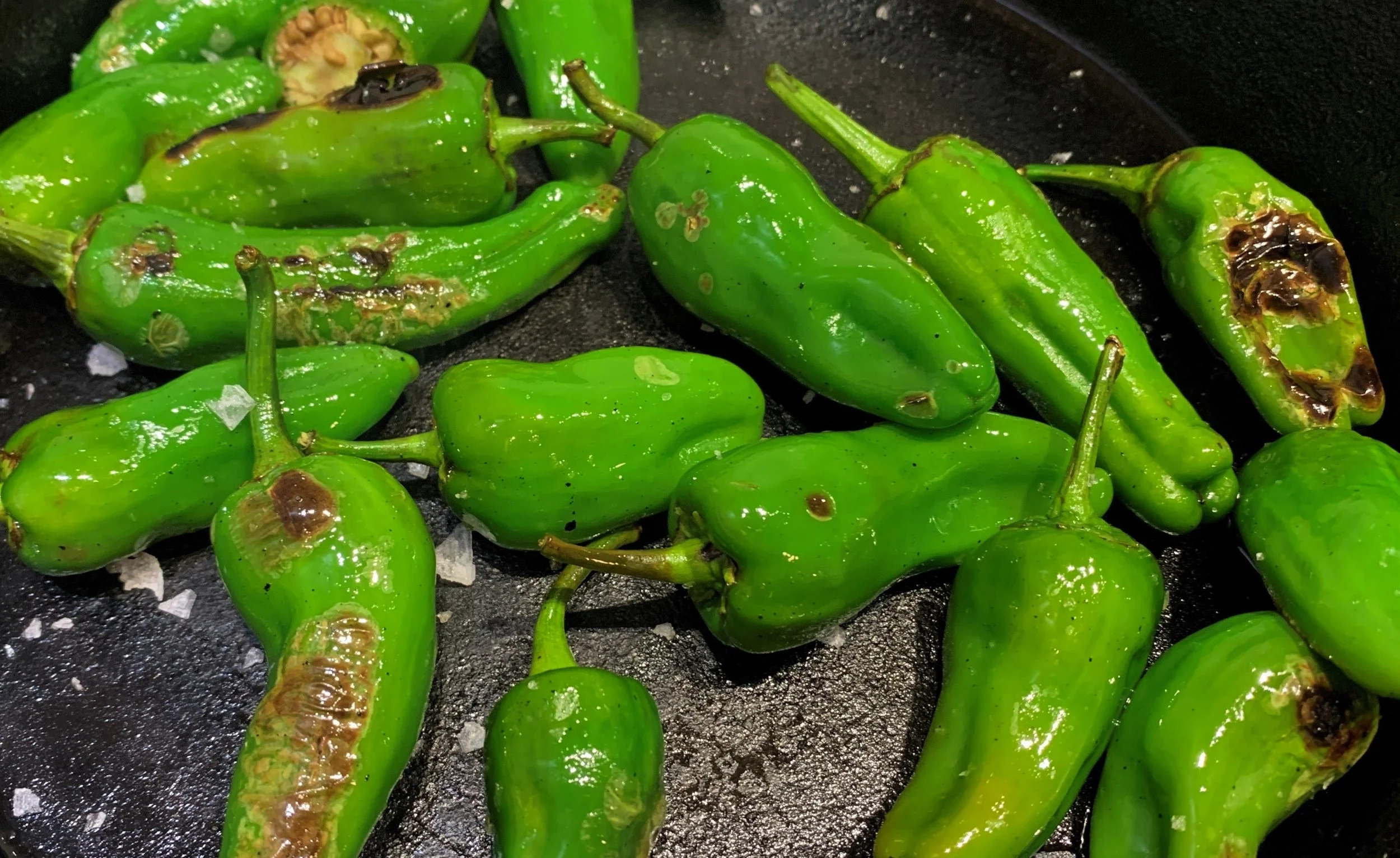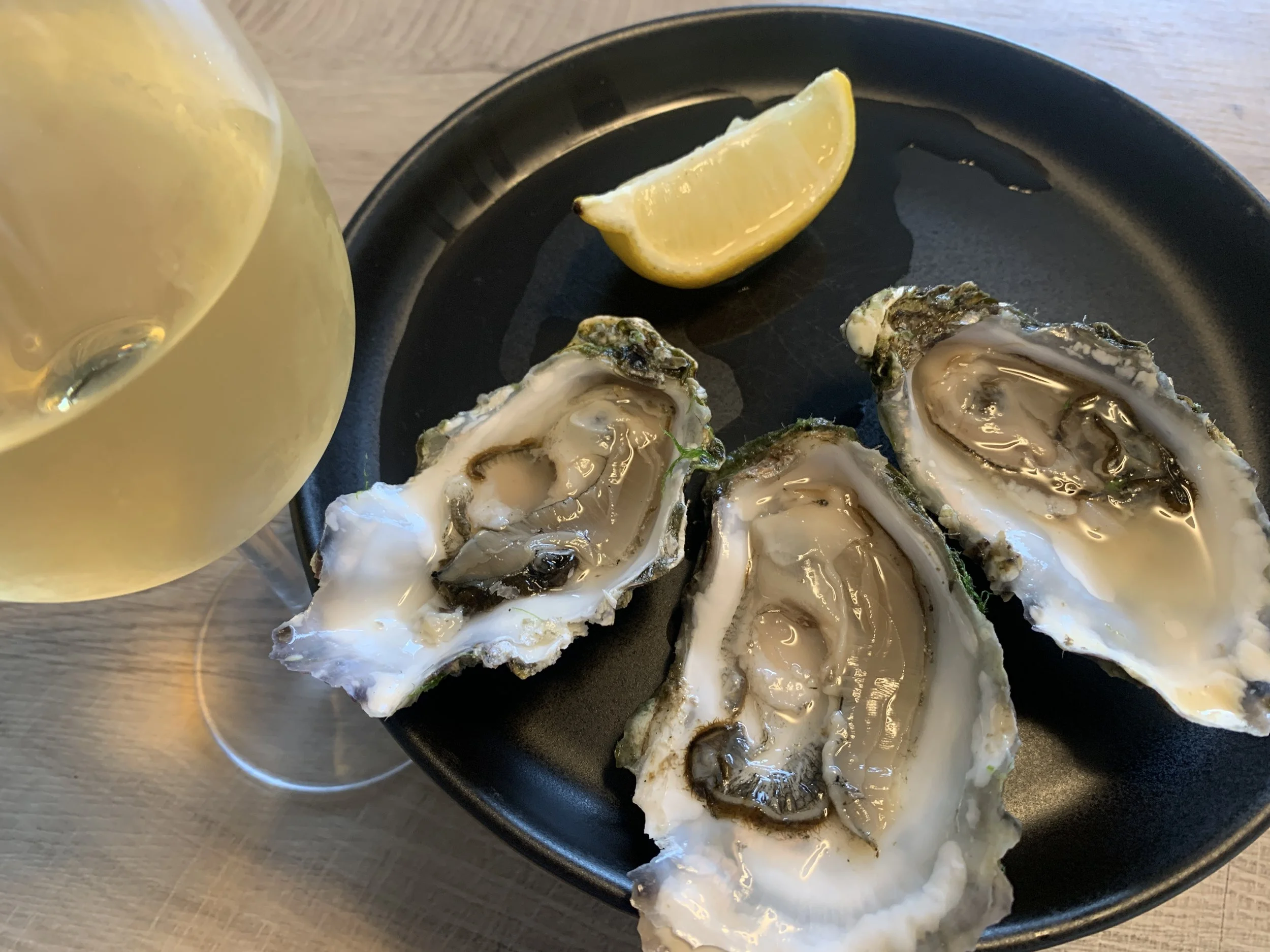In a seafood mood...
For any seafood lover out there – and naturally Orkney has a lot of seafood lovers – that name may well sound familiar. Albariño is the world’s greatest seafood wine, loved in its native Galicia in northwest Spain, and increasingly well known around the world. It’s always on our shelves, and we supply excellent versions to The Storehouse and The Lynnfield Hotel.
This past week we’ve been highlighting some of our favourite Galician dishes, all of which go beautifully with a nicely chilled glass of Albariño. We thought we’d gather them together in one place for future reference anytime you feel in a seafood mood.
The dishes vary from totally simple to slightly more ambitious. Let’s start with the easiest. All you need is a good cheese and wine shop. Now where could you find one of those?
Queixo / Cheese
Cheese is more often served as a snack or appetizer, rather than at the end of a meal. Unlike central Spain, cow’s milk is more common in Galicia than sheep’s. Well, this is ‘Green Spain’ the wettest and coolest part of the country, where grass and other green stuff grows plentifully. (Does that sound familiar?) It’s a happy land for cows.
· The best known Galician cheese is Tetilla, which is pale yellow and mild, not unlike a firm Orkney farm cheese. Kirkness & Gorie sometimes have that one.
· Failing that, Manchego is excellent. Mahon is another good mild Spanish cheese, but I hesitate to recommend it, as it comes from Menorca off the east coast: wrong side of Spain entirely! Still, its flavour and texture are good, so it’s worth a try, just don’t tell the Galicians.
· A sure-fire winner is Westray Wife or another firm Orkney farm cheese.
· Slice thinly and serve beautifully presented with small bowls of almonds, walnuts or sultanas. No need for crackers, just nibble the cheese interspersed with the odd fruit and nut. Membrillo, a quince paste, is also often served with cheese: we always have that in K&G.
· Serve with a nice glass of Albariño!
Pimientos de Padrón / Scorched Padron Peppers
Padron peppers are served all over Spain – and can be found in shops here in the summer months – but they originated in the Kirkwall-sized town of Padrón, near Santiago de Compostela in northern Galicia. They look a bit like mini green peppers, but slightly more pointed. They’re generally not spicy (though very occasionally you get a surprise!) They make an ideal snack to accompany a drink or precede a meal.
· Wash and dry your peppers. (You dry them so they fry rather than steam when you put them in the pan.)
· Heat a heavy frying pan till it’s very hot, then add a small amount of olive oil.
· Turn your extractor fan to full, or open a window!
· Add the peppers to the scorching hot pan and leave them for a good few minutes. Then turn them over. The skin should be almost burnt, with brown or even black patches.
· Turn the peppers once or twice more, trying to get them blackened all over. But don’t expect perfection.
· Tip on to a serving dish, sprinkle with coarse sea salt (Malden is perfect) and devour. Eat hot or at least warm for maximum flavour. Pick up by the stalk and nibble away – avoid the seeds.
· If you put in too much oil and they look greasy, dry in some kitchen roll before serving.
· Can you add anything else? Black pepper is good. And – very non-traditional – some flakes or grates of bottarga, that umami-rich Italian seasoning made of preserved tuna roe. Sounds a bit odd, but is absolutely delicious.
· Serve with a nice glass of Albariño!
Navajas / Spoots
Galicians seem to love spoots as much as Orcadians do. Like us, they believe in doing as little as possible to them before eating them.
· First catch your spoots.
· Boil steam or (my favourite, which I learned from Alan Craigie of the Creel) grill them:
· Heat a frying pan, preferably one of those ridged ones, to ahigh heat. Place the spoots in the pan, hinge side down so when they open they are gaping upwards. You can now sprinkle over some lemon juice or white wine or vermouth which gives a nice acidic zing, and the steam from which helps finish the cooking.
· You can serve them like that, or, for extra finesse you can do the above stage in advance, allow the spoots to cool, them remove them from the shells. Cut off the inedible bits and wash away any sand, then replace the meat in the shells. If you want to be fancy spread over some breadcrumbs and dot with butter before warming under the grill.
· Serve with a nice glass of Albariño!
Empanada Gallega de Atun / Galician Tuna Empanada
Empanadas are somewhere between a pie and a pasty. These days we’re more familiar with them on South American menus, but they originated in Galicia, and across the border in northern Portugal. They’re made large and cut up before serving, so you can ether cut them in small squares as part of a tapas selection, or you can cut a bigger piece and make it a main course with some green or tomato salad on the side.
· Roll out puff pastry to the size required for your base. Then another piece the same size for your lid.
· Hard-boil an egg or two, depending on size and how much you like egg.
· Chop an onion finely and soften in olive oil. You don’t want it to brown, just softened.
· You can add some extra finely diced vegetables at his point if you want. They’re more for attractive flecks of colour rather than to be a significant flavouring so go easy. Two or three cherry tomatoes. Half a red or yellow pepper. Or be non-traditional and try a handful of sweetcorn, or even some kale.
· Allow the onion and veg to cool at least a little, then mix with the chopped egg and a drained tin of tuna. (A nice big tin of Ortiz would be perfect.) Season with salt and pepper.
· Prick the pastry base with a fork to stop it rising too much, then spread the tuna mix evenly over it. Put the lid on top, crimp the top and bottom edges together, and cut a few small holes in the top to let steam out. Brush the top with beaten egg for a nice golden finish.
· Bake in the oven at 185C for about 30 minutes.
· Allow to cool till it’s either just warm, or cool, whatever suits, before cutting it into squares or wedges.
· Serve with a nice glass of Albariño!
Couldn’t get scallops in their shells tonight, so improvised…doesn’t look so impressive but tasted fantastic.
Vieiras Gratinadas / Baked Scallops with Breadcrumbs
Scallops are an Orkney classic, both in terms of quality and popularity. The most common preparation is simple frying, which of course is delicious. There used to be fashion for diced black pudding or chorizo, and while some folk swear by that, we feel it’s been done to death. So let’s try a Galician approach!
· Buy scallops in their shells. Nice big king scallops would be best.
· Open and discard top shell. Separate scallop meat from bottom shell and tidy it up as you usually would. We think cutting off the small white ‘smooth muscle’ is essential, as well as the guts. But leave the roe. Put a scallop back in each shell and arrange them all on a baking tray.
· Mix together a spoonful of white wine and lemon juice, a touch of salt and pepper, and some crushed garlic. Drop half a teaspoon or so in each shell.
· Mix a reasonable quantity of breadcrumbs with olive oil, grated Manchego (or other hard cheese – Parmigiano is perfect except for not being Spanish) and some chopped herbs: thyme or parsley would be good. In Spain you quite often get shreds of good quality ham mixed in too, but it’s not essential. (What next? Black pudding?!) Season, then spread a thin blanket over each scallop in its shell-bed.
· Grill under a medium-hot grill for about eight minutes until golden brown, with juices bubbling through. Don’t put the tray too close to the grill, or the breadcrumbs will burn before the scallop cooks.
· Give each of your guests either three or five scallops each, depending on size of scallops and appetite of guests, accompanied by bread for wiping out the juices and some lemon slices.
· Serve with a nice glass of Albariño!
Westray oysters - a feast in themselves!
Mariscada Gallega / Seafood platter
Albariño is the world’s greatest seafood wine, so why not go to town and organise a big sharing platter of Orkney’s finest seafood?
· Crab claws, steamed and cooled mussels, oysters, potted shrimp, grilled or boiled prawns, langoustines, lobster – anything you fancy really, and that you can get really fresh. We’d advise against pickled herring as its flavour and acidity is too overpowering.
· A lot of the attraction of this dish is in the presentation, so try including some sprigs of parsley and/or a little smoked paprika, and certainly provide some lemon wedges. Be prepared to do a bit of artful arranging before your guests dive in and wreck it.
· Serve with lemon slices, bread and butter, and maybe some garlic mayonnaise.
· Alternatively, save yourself a lot of work and order a seafood plater at The Lynnfield Hotel. Or, at Marisquería Rías Baixas 2 in Vigo, whichever is more convenient for you.
· Serve with a nice glass of Albariño!







